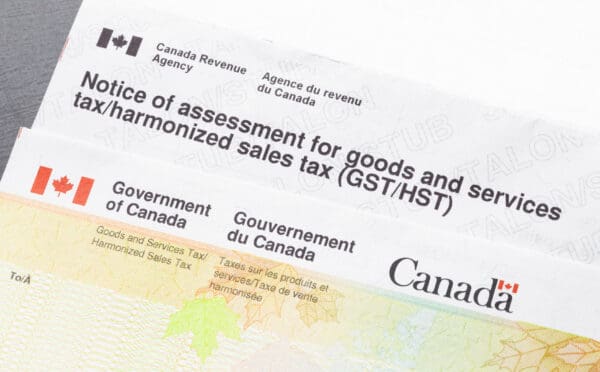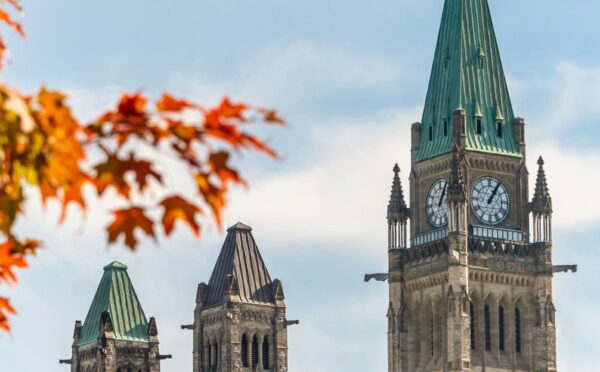Authors
Partner, Tax, Calgary
Associate, Tax, Toronto
Associate, Tax, Calgary
Osler’s National Tax Group has prepared in-depth analysis of these developments. See our main Update on Budget 2024.
The Honourable Chrystia Freeland, Deputy Prime Minister and Minister of Finance, tabled the Liberal government’s eighth budget on April 16, 2024. Budget 2024 announces further details on — and in certain cases expands — previously announced investment tax credits (ITCs) to support the adoption of clean energy technology and Canada’s net-zero commitments.
Currently, the government has only introduced legislation before Parliament to enact the Clean Technology ITC and the Carbon Capture, Utilization and Storage ITC. It released draft legislation for the Clean Hydrogen ITC and the Clean Technology Manufacturing ITC in December 2023. The clean energy ITC announcements in Budget 2024 were not accompanied by draft legislation. The government emphasized that introducing legislation to implement the remaining ITCs, including the proposed enhancements and expansions contained in Budget 2024, is a priority item.
Table of contents
Clean Electricity investment tax credit
In Budget 2023, the government announced a refundable Clean Electricity ITC that would be available to taxable and tax-exempt entities investing in clean energy equipment. Budget 2024 elaborates on the design and implementation details for the Clean Electricity ITC. However, draft legislation was not included with these announcements.
The Clean Electricity ITC is equal to 15% of the capital cost of “eligible property” where the proposed labour requirements regarding prevailing wages and apprenticeships are met. The ITC rate is reduced to 5% where the labour requirements are not met. The proposed labour requirements are contained in Bill C-59, which is currently in the committee review stage at the House of Commons.
Eligible claimant
Budget 2024 clarifies that the Clean Electricity ITC will only be available to Canadian corporations that fall within one of the following listed categories (eligible corporations):
- taxable Canadian corporations
- provincial and territorial Crown corporations (provided that they meet certain additional requirements)
- corporations owned by municipalities
- pension investment corporations
- corporations owned by Indigenous communities
If the Canadian corporation would otherwise be able to claim immunity (for example, certain Crown corporations) or exemption from tax (which could include any of the last four categories listed above), it must agree to be subject to the provisions of the Income Tax Act (Canada) (Tax Act) relating to the Clean Electricity ITC, including provisions regarding audit, penalties and collections.
Given that only corporations are eligible for the Clean Electricity ITC, Indigenous investors wishing to access this credit for an investment in an eligible property will have to invest through a corporation. An Indigenous-owned corporation is exempt from tax under the Tax Act only if it meets the strict requirements regarding the geographical source of the income earned by the corporation. Whether these requirements can be satisfied will depend on the location of the project and the nature of the investment made by the Indigenous-owned corporation. Where these requirements are not satisfied, it appears that the Indigenous investor must subject the income earned on the investment to full taxation under the Tax Act in order to access the Clean Electricity ITC.
Where “eligible property” is owned by a partnership, Budget 2024 provides welcomed confirmation that each partner that is an eligible corporation can claim its shares of the partnership’s Clean Electricity ITC, subject to rules that are generally consistent with those applicable to the Clean Technology ITC contained in Bill C-59. Although Budget 2024 did not elaborate on the nature of the applicable partnership rules, presumably these rules include the “at-risk amount” limitations applicable to limited partners. Budget 2024 did not specify any exceptions for tax-exempt partners.
Eligible property
The following types of equipment will be eligible for the Clean Electricity ITC:
- non-emitting electricity generation systems: wind, concentrated solar, solar photovoltaic, hydro (including large-scale), wave, tidal, nuclear (including large-scale and small modular reactors), geothermal, specified waste materials
- eligible natural gas systems (described in more detail below)
- stationary electricity storage systems that do not use fossil fuels in their operation
- equipment for the transmission of electricity between provinces and territories
Capital expenditures to refurbish existing eligible property will also qualify for the credit.
There is significant overlap between the types of equipment eligible for the Clean Technology ITC and the Clean Electricity ITC. Where the eligible property is owned by a partnership and eligible for both credits, Budget 2024 states that the partners can claim their reasonable share of either credit (but not both credits). This statement is welcome confirmation that, in these circumstances, partners can choose which credit to claim independent of each other.
Eligible natural gas systems: electricity generation and cogeneration from natural gas with carbon capture
The Clean Electricity ITC will be available in respect of “eligible natural gas systems”, which are described to be systems that
- use fuel, all or substantially all of which is natural gas, to generate either electricity or a combination of electricity and heat
- use a carbon capture system to limit emissions
- has an emission intensity no greater than 65 tonnes of carbon dioxide per gigawatt of energy produced
In an integrated “eligible natural gas system”, “eligible property” qualifying for the tax credit will include equipment that generates both electrical and heat energy; heat recovery equipment; electrical generating equipment; heat generating equipment primarily used to operate electrical generating equipment; and carbon capture equipment.
A system’s emissions intensity for purposes of the Clean Electricity ITC will be computed using a modified version of the formula used in the Regulations Limiting Carbon Dioxide Emissions from Natural Gas-fired Generation of Electricity under the Canadian Environmental Protection Act. The proposed modifications include (i) taking into account the emissions attributable to the combustion of biomass and (ii) excluding emissions that are captured and stored in dedicated geological storage.
Before the Clean Electricity ITC is claimed, project plans must be reviewed by Natural Resources Canada to determine equipment and systems eligibility and, once expenditures are incurred, equipment eligibility must be verified by Natural Resources Canada.
Interprovincial transmission equipment
Property eligible for the Clean Electricity ITC includes certain property used to transmit or manage electrical energy that primarily originates in, or is destined for, another province or territory. Buildings, electrical distribution equipment and electrical transmission equipment rated for voltages less than 69 kilovolts will not be eligible for the credit.
Eligible property includes
- electrical transmission equipment
- electrical transmission structures
- related equipment used for managing traded electricity
Where property is exclusively located in one province or territory, it may nonetheless qualify as eligible property, provided that it is primarily used for the purpose of exporting electricity to another province or territory.
Potential repayment obligations
The Clean Electricity ITC will be subject to potential repayment obligations. Where an eligible property, other than an eligible natural gas system, has been converted to an ineligible use, exported from Canada or disposed of within 10 years after the property was first acquired, the Clean Electricity ITC could be repayable. This potential repayment obligation would be in proportion to the fair market value of the property at the time that it ceased to be an eligible property or was exported or disposed of.
Eligible natural gas systems will be subject to special recapture rules for exceeding the emissions intensity limit:
- Five-year compliance period: There is a one-time verification of the system’s emissions intensity based on a five-year compliance period. If, during this compliance period, the average emissions intensity is more than 5% above the limit of 65 tonnes of carbon dioxide per gigawatt of energy produced, the full amount of the Clean Electricity ITC claimed must be repaid.
- After the five-year compliance period: Annual emissions intensity reports will be required for an additional 15 years. During this period, if the annual emissions intensity exceeds the 65 tonnes of carbon dioxide limit, the system will be considered to have been converted to an ineligible use and the credit must be repaid in proportion to the fair market value of the system.
Additional conditions for provincial and territorial Crown corporations
Budget 2024 provides that provincial and territorial Crown corporations will only be eligible for the Clean Electricity ITC in respect of investments made in eligible property situated in designated jurisdictions.
A province or territory will be a designated jurisdiction for this purpose if the federal Minister of Finance is satisfied that the provincial or territorial government has
- publicly committed to work towards a net-zero electricity grid by 2035 and pass through the value of the Clean Energy ITC to electricity ratepayers to reduce energy bills
- directed provincial and territorial Crown corporations claiming the Clean Electricity ITC to annually report to the public how the credit has improved ratepayers’ energy bills
A penalty applies if a Crown corporation fails to satisfy the annual reporting obligation.
The Department of Finance will consult with the provinces and territories on the details of these conditions before releasing draft legislation on the Clean Electricity ITC.
Coming into force
The Clean Electricity ITC will apply to eligible property that is acquired and becomes available for use on or after April 16, 2024 (Budget Day) and before 2035 and is not part of a project that began construction before March 28, 2023. Similar coming-into-force rules will apply for eligible property acquired by provincial and territorial Crown corporations, subject to the following modifications:
- If a provincial or territorial government satisfies all the conditions for designation by March 31, 2025, and is subsequently designated by the federal Minister of Finance, then provincial and territorial Crown corporations investing in that jurisdiction will be able to access the Clean Electricity ITC for eligible property that is acquired and becomes available for use on or after Budget Day for projects that did not begin construction before March 28, 2023.
- If a provincial or territorial government has not satisfied all the conditions by March 31, 2025, then provincial and territorial Crown corporations investing in that jurisdiction will not be able to access the Clean Electricity ITC until the province or territory is designated. The Clean Electricity ITC will apply to property that is acquired and becomes available for use from the date when the province or territory is designated by the federal Minister of Finance, for projects that did not begin construction before March 28, 2023.
Budget 2024 indicates that the government is aiming to release draft legislation for the Clean Electricity ITC in the fall of 2024.
Modifications to the Clean Technology Manufacturing investment tax credit
Budget 2023 proposed to introduce the Clean Technology Manufacturing ITC, a refundable tax credit equal to 30% of the cost of investments in “eligible property” that is “used all or substantially all for eligible activities”. Draft legislation to implement this credit was released in December 2023 for public comment.
The eligible activities for this credit include “qualifying mineral activities” producing all or substantially all qualifying materials (i.e., cooper, nickel, cobalt, lithium, graphite and rare earth elements). Qualify mineral activities will consist of extraction; certain processing activities at mine or well sites, tailing ponds, mills, smelters or refineries; certain recycling activities; and certain graphite activities.
Budget 2024 announces several adjustments to provide greater clarity and improve access for critical mineral projects. The adjustments, summarized below, recognize that the production of qualifying materials may occur at projects engaged in the production of multiple metals (polymetallic projects).
Use of values
Budget 2024 announces that the value of the “qualifying materials” will be used to assess the extent to which property is used, or is expected to be used, for “qualifying mineral activities” producing qualifying materials.
‘Primarily’ test for property at mine or well sites
“Eligible expenditures” will be modified to include investments in eligible property used for qualifying mineral activities that are expected to produce primarily qualifying materials at mine or well sites (including tailing ponds and mills located at these sites).
The “primarily” test will generally mean that eligible property must be used, or be expected to be used, for activities in which 50% or more of the value of the output comes from qualifying materials.
Recapture and safe harbour
The previously released draft legislation provides that the Clean Technology Manufacturing ITC could be subject to recapture where an otherwise eligible property is converted to be used for a non-qualifying activity within a 10-year period following its acquisition. Since a property will cease to be an eligible property where it is used for activities in which qualifying materials do not account for 50% of the value of the output, this test is subject to mineral price volatility.
To mitigate against the effects of such volatility on the potential recapture of the Clean Technology Manufacturing ITC, Budget 2024 proposes a safe harbour rule. Under the safe harbour rule, if the calculation of the expected production from the eligible property when claiming the Clean Technology Manufacturing ITC is done using specified five-year historical average mineral prices, then the same specified mineral prices will be used to calculate the ratio of qualifying materials produced from the property over the 10-year recapture period.
The safe harbour rule will apply in respect of all qualifying mineral activities.
Budget 2024 indicates that further details in respect of the design of this safe harbour rule will be provided at a later date.
Coming into force
The changes proposed in Budget 2024 will apply for property that is acquired and becomes available for use on or after January 1, 2024. This coming-into-force date is the same date used for the other aspects of the Clean Technology Manufacturing ITC.
The government indicates that draft legislation for these modifications will be released for consultation in the summer of 2024, with a target of introducing legislation in the fall of 2024.
Introduction of a new electric vehicle supply chain ITC
Budget 2024 announces a new electrical vehicle (EV) supply chain ITC to support the establishment of EV supply chains in Canada.
Businesses that manufacture EVs “and their precursors” will be eligible for the 30% Clean Technology Manufacturing ITC on investments in new machinery and equipment. The EV Supply Chain ITC supplements the Clean Technology Manufacturing ITC by providing a 10% credit on the cost of buildings used in three specified supply chain segments: (i) electric vehicle assembly; (ii) electric vehicle battery production; and (iii) cathode active material production.
For a taxpayer’s building costs to qualify for this ITC in any of the specified segments, a taxpayer (or members of a group of related taxpayers) must do one of the following:
- claim the Clean Technology Manufacturing ITC in all three of the segments
- claim the Clean Technology Manufacturing ITC in two of the three specified segments and hold at least a qualifying minority interest in an unrelated corporation that claims the Clean Technology Manufacturing ITC in the third segment
In the second case, where the taxpayer claims the Clean Technology Manufacturing ITC in two of the three specified segments, the building costs in the unrelated corporation will also qualify for the EV Supply Chain ITC.
This ITC will apply to property that is acquired and available for use on or after January 1, 2024. There will be a phase-out period of this ITC with a reduction to 5% in 2033 and 2034 and a subsequent reduction to nil after 2034.
Budget 2024 states that draft legislation will be released for public comment before this ITC is enacted, with design and implementation details anticipated in the 2024 Fall Economic Statement.
General update on timing for other announced credits
Budget 2024 indicates that legislation will be introduced to Parliament soon to implement the Clean Hydrogen and the Clean Technology Manufacturing ITCs. Draft legislation for these two credits was released for consultation in December 2023, with the comment period ending in early February 2024.


